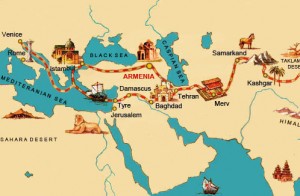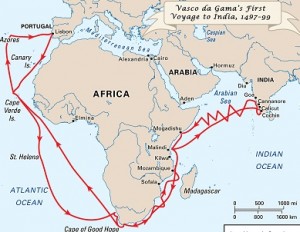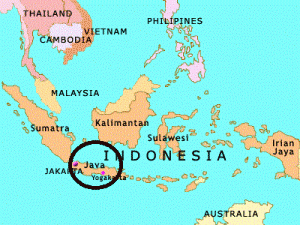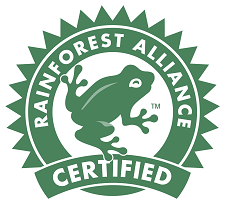Drink Coffee, Live Longer
Another scientific study has come out with the ultimate health benefit of drinking coffee, drink coffee and live longer. The journal Circulation published an article, Association of Coffee Consumption with total and Cause-Specific Mortality in Three Large Prospective Cohorts. This long and complicated title simply means that a lot of people were studied for cause of death. For decades the Harvard School of Public Health has enrolled and followed up on graduates in the health professions.
- Nurses’ Health Study: 74,890 (women)
- Nurses’ Health Study II: 93,054 (women)
- Health Professionals Follow-up Study: 40557 (men)
Over the years people enrolled in this study reported how much coffee they drank and when someone died the cause of death was recorded in the study. Over 4,690,072 person years (# of people x # of years) 19,524 women and 12,432 men died. The results of the study showed that people who drank between one and five cups of coffee a day had a lower risk of dying that those who did not drink any coffee.
- One cup a day: 6% lower risk of death
- Up to three cups a day: 8% lower risk of death
- Three to five cups a day: 15% lower risk of death
- More than 5 cups a day: 12% lower risk of death
It made little difference if people drank regular or decaf and the study controlled for age, drinking alcohol and other health and diet factors. The bottom line is that if you are a coffee drinker you have a lower risk of death from heart disease, stroke, diabetes, neurologic diseases and suicide. The study did not show a lower risk of dying from cancer.
If you find it difficult to understand what they say in Circulation there is a more readable version of these finding in The New York Times, Coffee Tied to Lower Risk of Dying.
But Not for Smokers
The bad news for smokers is that people in the study who smoked did not live longer if they drank coffee. The researchers believe that the many health related effects of smoking simply overwhelmed any beneficial effects of drinking coffee.
Is it the Antioxidants?
The researchers do not speculate on why coffee drinkers live longer, providing that they don’t smoke. However, there are two factors that have been identified as beneficial in coffee. One is the caffeine and the other is the antioxidants. The fact that both decaf and regular coffee helped reduce the incidence of death makes this author think that it is the antioxidants in both regular and healthy organic coffee that make the difference.
Scientifically an antioxidant is a molecule that inhibits the cell damage and cell death in human cells caused by oxidative breakdown of other molecule in the cell. Oxidation is a factor in sickness and aging. Antioxidants help prevent the damage caused by excessive oxidation and to a degree inhibit the aging process. When an oxidative reaction brought on by disease gets going it produces free radicals that start chain reactions which in turn cause cell and tissue damage. The human body has or uses antioxidants to control this situation. Natural means of controlling oxidation include vitamins C and E as well as glutathione. It is low levels of antioxidants that can lead to a condition referred to as oxidative stress and resultant damage to cells in the body.
More research will be necessary to see just what that allows you to drink coffee and live longer but that appears to be the bottom line from the recent study.
Coffee Varieties: Java
Coffee varieties are the subspecies of coffee that occur by natural selection and by selective breeding. Disease resistance, yield and flavor vary from variety to variety. Variety or breed selection is critical to the planter as he or she must pick the optimal variety for altitude, sun or shade, soil conditions and climate. Regarding coffee varieties here are a couple of terms:
Variety: A variety is a smaller group than a subspecies and a larger group than a form. A variety has most of the characteristics of the species but differs in specific ways.
Cultivar: This is a cultivated variety and is developed using agricultural breeding techniques. The coffee in your cup is most likely a cultivar. Two common cultivars are Bourbon and Typica.
An old coffee variety and one that is used as slang for coffee is java. Java coffee comes from the island of Java in Indonesia. As we noted in our article, Why Is Coffee Called Java,
[I]t was the Dutch traders who first colonized Australia, the East Indies and even New York (New Amsterdam). The Dutch are responsible for finding the coffee plants in East Africa and planting them on their island colonies including the Indonesian island of Java in the 1500’s.
Until a coffee leaf rust plague wiped out most of the plants on Java in the 1880s it was a global supplier of coffee, thus the name Java.
Today the majority of coffee grown on Java is Robusta as it is resistant to coffee leaf rust. However, there are still Arabica coffee plantations on Java that produce the Java variety.
Java Coffee
Kopi Jawa, an Indonesian expression, refers to Java coffee and to the style of Java coffee, strong black and sweet. Java Arabica coffee is grown primarily on the Ijen Plateau in the East of Java. The plateau is around 4,200 feet high (1,400 meters) and ideal for coffee production. Several estates date back to the Dutch era: Blawan, Jampit, Pancoer, Kayumas and Tugosari.
Aged and Monsooned Coffee
A unique treatment to some Java coffee is that it is aged for as long as three years. Although the coffee beans are initially dried they are exposed to warm, moist air during the rainy season. As they age the beans turn from green to light brown and gain strength but lose acidity. Aged Java coffees are referred to as Old Java, Old Brown or Old Government.
Mocha Java Blend
A unique coffee blend dates back two or three centuries, Mocha-Java. Back in the era of Dutch traders it would found that mixing Java Arabica coffee with Mocha Coffee from Yemen resulted in a pleasingly complex brew. This is still available today and should not be confused with the mocha that you can purchase in a coffee house.
Cup of Java versus a Cup of Joe
So, if you like a cup of Java and would like the real thing from the island of Java that is entirely possible. Just specify that you want the Java coffee variety from Indonesia and not any old cup of Joe!
Roast Your Own Coffee
If you are a true coffee aficionado you may choose to roast your own coffee. What does this entail? Can you get good at it? What do you have to buy? We looked on the internet for a list of coffee roasters and found a few suggestions and brands. Here is some info if you want to start to roast your own green coffee beans.
Roasting Devices
You can roast your own coffee in something as simple as a popcorn popper or with a programmed coffee roaster in the $1,000 range. We will start with the popcorn popper approach.
West Bend 82416 Air Crazy Hot Air Popcorn Popper
This is a popcorn popper for 4 quarts of popcorn. It uses hot air and no oil. This device lists on the West Bend site for $29.99. If you are going to use this approach you will need to experiment with small quantities. People who have tried this approach say that it is all too easy to go from a light roast to a charred dark roast in 30 seconds of excessive roasting. But the price is right! Just remember that this is a popcorn popper.
-
- No oil required! Pops up to 4 quarts of healthy and delicious popcorn.
- Popcorn pops using hot air in 3 minutes for a super speedy snack.
- Includes ½ cup measuring cup that doubles as a convenient butter melter.
- Popper base is only 5.5 inches in diameter; this slim appliance can fit in any spot on your countertop, rec room, or studio.
- Quick, clean, and easy. Popcorn on demand!
- 1040 watts
Whirly Pop
This is another popcorn popper. The stovetop whirley pop is $24.99 online at the Whirley Pop website. Just remember that this device is made to pop popcorn and experiment a lot. Again, the price is right.
Did you know that hand-cranked stove top popcorn poppers are the best way to make movie theater style popcorn at home? It’s true! The Whirley Pop Popcorn Maker is a favorite for families and popcorn lovers alike who adore the taste of hot, fresh popcorn straight from the cinema – without having to leave the kitchen!
Nesco and Fresh Roast
These are real coffee roasters in the $100 to $200 price range, Nesco Home Coffee Roaster and Fresh Roast SR 500. With these devices you can more accurately aim for a light, medium or dark roast with the assurance that you will come close to what you want.
The Fresh Roast SR500 has the same capacity ( 4 scoops , 120 gm) and features of the SR300 – plus three temperature settings that can be adjusted any time during the roasting process. High temp. = 490 degrees Medium temp. = 455 degrees Low temp. = 390 degrees A Fan Speed Control has been added that allows the finest tuning of the roast.
Behmor, Gene Café or HotTop
The Behmor 1600, Gene Café Drum Roaster and HotTop KN8828-Basic fall in the $300 to $800 range with added bells and whistles for each increase in price. Each of these companies offers a range of products devoted coffee roasting.
TopHot KN8828-Programmable
This Top Hot product goes for around $1,000. Like all of the other high end roasters it is more likely to give you exactly the degree of roast that you want once to get the hand of it. And like all of the high end roasters it is more time consuming and tedious to clean.
The point of this quick review is that if you want to roast your own healthy organic coffee there are a range of options, each with its advantages and drawbacks.
What Does Sustainable Mean?
Organic coffee is not only good for you but it is good for the environment because organic coffee growers use sustainable farming practices. The United States Department of Agriculture tells us that USDA certified coffee must meet standards upon inspection.
Organic food is produced by farmers who emphasize the use of renewable resources and the conservation of soil and water to enhance environmental quality for future generations. Organic meat, poultry, eggs, and dairy products come from animals that are given no antibiotics or growth hormones. Organic food is produced without using most conventional pesticides; fertilizers made with synthetic ingredients or sewage sludge; bioengineering; or ionizing radiation. Before a product can be labeled ‘organic,’ a Government-approved certifier inspects the farm where the food is grown to make sure the farmer is following all the rules necessary to meet USDA organic standards. Companies that handle or process organic food before it gets to your local supermarket or restaurant must be certified, too.”
The term often used to describe the constellation of practices in organic farming is sustainability. But what does sustainable mean really? To a large degree this term has been hijacked by big and non-organic food companies to attract buyers. Here are some thoughts on sustainability.
Regenerative versus Degenerative
Alternet writes about how we should stop using the term sustainable and instead use regenerative or degenerative. They suggest a regeneration revolution.
With the “sustainability” label co-opted by Big Food, it’s time to re-frame agriculture into two categories: regenerative and degenerative.
Last week, PoliticoPro reported that the U.S. Secretary of Agriculture wants “farmers and agricultural interests to come up with a single definition of sustainability in order to avoid confusing the public with various meanings of the term in food and production methods.”
We agree with Secretary Tom Vilsack that the word “sustainability” is meaningless to consumers and the public. It’s overused, misused and it has been shamelessly co-opted by corporations for the purpose of greenwashing.
Their argument is that at best sustainable practices maintain the status quo and at worst the term is used as an outright lie. Their proposal is that people should be able to choose food that is produced using organic regenerative practices based on sound ecological principles that rejuvenate the soil, grasslands and forests; replenish water; promote food sovereignty; and restore public health and prosperity – all while cooling the planet by drawing down billions of tons of excess carbon from the atmosphere and storing it in the soil where it belongs.
The point being that it is possible to repair the earth and not just maintain the status quo. The problem is if people are willing to pay the cost by purchasing more expensive food.
Individual Shopping Decisions
Whole Foods Market is a supermarket chain where you can reliably find lots of great organic food. Whole Foods is also commonly referred to as whole paycheck! We recently wrote about the most popular coffee brands.
The ranking of the top 5 sellers with sales in billions is this:
- Keurig, $2.57 billion
- Folgers, $1.56 billion
- Starbucks, $950 million
- Maxwell House, $820 million
- Dunkin’ Donuts, $420 million
Major factors for many people when they buy coffee are convenience and price.
The fact of the matter is that Folgers, Maxwell House and Dunkin’ Donuts are not selling high end shade grown, fair trade organic coffee. They are providing a reasonable product for a reasonable price. This does not mean that we should not be able to get truth in labeling however. What does sustainable mean? The word has been coopted by big business and has lost much of its meaning. It is a good idea to look for better ways to describe coffee and all foods that are grown using practices that replenish and improve the environment. Then the consumer can make an informed decision.
Why Is Coffee Called Java?
Have you ever wondered why some people refer to coffee as java? For that matter how the expression a cup of Joe come about? The reason for why coffee is called java is clear and the reason we ask for a cup of Joe is questionable. Let’s go back in time to the era called The Age of Exploration which lasted from the 15th to 17th century (1400 to 1600) and before.
Trade with the East
Trade between the Far East and Europe took place over the Silk Road, an ancient network of roads extending from China and India through Asia and the Middle East. The European connection was the Western capital of the Roman Empire, Constantinople. When Islamic armies gained strength in the late 1300’s they cut off the supply of silks, spices and other goods that flowed through Constantinople into the Mediterranean Basin. Half a century before the fall of Constantinople ship owners and traders from Italy took their skills and boats and set up shop in Portugal and Spain. From there they explored and set up trade routes along the coast of Africa eventually rounding the continent and sailing to India in 1497-99.
The Spanish and Portuguese colonized South and Central America and the British and French soon followed. However, it was the Dutch traders who first colonized Australia, the East Indies and even New York (New Amsterdam). The Dutch are responsible for finding the coffee plants in East Africa and planting them on their island colonies including the Indonesian island of Java in the 1500’s.
Until a coffee leaf rust plague wiped out most of the plants on Java in the 1880s it was a global supplier of coffee, thus the name Java. Calling coffee Joe is a different story.
Why Do We Call It Joe?
The most credible origin for calling coffee Joe is that it started as a combination of Java and the drink that you find in a coffee house, Mocha. Dating back to the 1930’s some people used the expression jamoke for a mixture of coffee and chocolate. As is the nature of slang expressions they get shortened over time and Joe came into being. There are several theories but unlike the very clear origin of calling coffee Java the cup of Joe story is lost in time.
Can You Get Coffee from Java Today?
The old colonial plantations producing Arabica coffee on Java are shadows of their former selves producing only fraction of Indonesian coffee output. The main coffee coming from this part of the world is Robusta which is leaf rust resistant and the source of coffee for virtually all non-coffee caffeinated drinks.
How about a Cup of Mocha?
Mocha is a coffee, milk and chocolate drink. Start with espresso and add steamed milk followed by chocolate syrup. This drink should not be confused with Ethiopian mocha beans which are coffee but with a chocolate flavor. And no matter what the origin of Java and cup of Joe, enjoy your coffee, preferably the healthy organic variety.
Coffee for the Birds
Everyone likes their coffee and coffee is good for your health as well. But many of us are concerned about the environment, global warming and the loss of species. Birds are especially vulnerable to deforestation and here is where coffee comes into the picture. When large farming operations cut down trees to plant sun-tolerant coffee they remove habitat for birds. A thoughtful article from the Taos News looks at coffee for birds.
For sure, the bright scarlet package with a picture of a colorful macaw soaring upward and smack into the words COSTA RICA catches my eye. So I grab the bag of coffee from the supermarket shelf. But before I plunk it into my shopping cart, something tells me to check out the label. I read “whole bean” and “dark roast level.” I turn the bag over and find the part that might have the info I’m looking for. I find a sustainability statement. Sounds good, but I want to make sure that the coffee I’m about to buy comes from coffee fields friendly – or at least not hostile – to the birds I’ve been enjoying all summer long here in Northern New Mexico.
The author goes on to point out that many birds that spend their summers in the USA spend their winters in Mexico, Central America and even South America. They live in mountain forests in these regions, the same places that coffee is grown. As sun-tolerant varieties of coffee have been developed, coffee farmers have cut down upland tropical forests and planted coffee. They may have planted the occasional plantain to help prevent wholesale soil erosion but have removed the habitat for local and migratory birds. The question is, if you want to limit your coffee purchases to growers who maintain bird-friendly habitats how do you proceed? The author mentions Rainforest Alliance, USDA Certified, shade grown, Fair Trade and sustainable and asks “what does it all mean?” In the end it turns out that the Smithsonian Migratory Bird Center has the strictest certification followed by Rainforest Alliance for coffee farming that is kindest to the birds.

Smithsonian Migratory Bird Center
The Smithsonian Migratory Bird Center has a Bird Friendly Coffee page on their web site.
The Smithsonian Migratory Bird Center has developed the only 100% organic and shade-grown coffee certification available: Bird Friendly.
That’s right-no other bag guarantees that every bean is produced organically and under high-quality shade. Our seal of approval ensures tropical “agroforests” are preserved and migratory birds find a healthy haven when they travel from your backyard to those faraway farms producing the beans you so enjoy every morning.
The point is that USDA certified and other certifications do not guarantee that the forest habitat was preserved while the Bird Friend Coffee certification does.
Rainforest Alliance
This is the second reliable certification if you want coffee for the birds. Rainforest Alliance coffee certification requires that coffee farmers follow strict standards.
The Rainforest Alliance works with coffee farmers to improve their livelihoods and the health and well-being of their communities. Coffee farms or groups of smallholder farmers that earn the Rainforest Alliance Certified™ seal are audited annually against a rigorous standard with detailed environmental, social and economic criteria. These criteria are designed to protect biodiversity, deliver financial benefits to farmers, and foster a culture of respect for workers and local communities. Rainforest Alliance certification also promotes decent living and working conditions for workers, gender equity and access to education for children in farm communities.
If you specifically want great coffee for the birds, look for Bird Friendly Coffee or the Rainforest Alliance seal.
Ethiopia, Coffee and Injera
Coffee was discovered in the East African country of Ethiopia by a man tending his goats (which become so energetic after eating beans from the plant that they did not sleep at night). Although coffee has certainly moved on from the highlands of Ethiopia and adjacent Eritrea coffee is still part of the culture. When guests arrive at a traditional home in Ethiopia or Eritrea it is common to sit around a low table, make and drink coffee and eat various meats, fruits and vegetable wrapped in Injera bread. CulinaryLore.com tells us about Injera.
Injera (or engera) is a large, flat crepe-like spongy bread that is a staple source of carbohydrates in Ethiopia and Eritrea. It is made from tef (or teff), a millet-like grain native to Ethiopia.
The large pieces of spongy bread serves as both the dish for meals, which is used for a variety of different stews or sauces, especially wat, Ethiopias spicy, and sometimes fiery, curry-like stew.
Injera is popular in Ethiopia and among Ethiopian and Eritrean expats across the world. In addition it is popular with individuals who cannot eat wheat products containing the protein gluten. The teff flour from which Injera is made is gluten free!

Meal with Injera Bread
Injera is a spongy kind of sourdough bread made from teff grass, the preferred grain of Northeast Africa. When eating at a traditional Ethiopian mean one tears off a section of Injera and uses it to pick up food from the platter, wrapping the food with the Injera like with a taco and then eating. Coffee in traditional Ethiopian setting is made at the table.
Ethiopian Coffee Ceremony
Making coffee in Ethiopia is referred to as the coffee ceremony according to epicurean.com.
In a world where time has long become a commodity, the Ethiopian coffee ceremony takes us back to a time when value was given to conversation and human relations. Perhaps an ancient proverb best describes the place of coffee in Ethiopian life, “Buna dabo naw”, which when translated means “Coffee is our bread!”
The roasting of the coffee beans is done in a flat pan over a tiny charcoal stove, the pungent smell mingling with the heady scent of incense that is always burned during the ceremony. The lady who is conducting the ceremony gently washes a handful of coffee beans on the heated pan, then stirs and shakes the husks away. When the coffee beans have turned black and shining and the aromatic oil is coaxed out of them, they are ground by a pestle and a long handled mortar. The ground coffee is slowly stirred into the black clay coffee pot locally known as ‘jebena’, which is round at the bottom with a straw lid. The lady finally serves the coffee in tiny china cups to her family, friends and neighbors who have waited and watched the procedure for the past half-hour.
Drinking coffee in Ethiopia is a social event along with eating Injera bread. Coffee is not only part of the eating culture in Ethiopia it is an integral part of the economy.
Ethiopian Coffee
The birthplace of coffee is still a producer of high quality Arabica coffee. Coffee in Ethiopia grows wild and can be harvested directly from forests. Alternatively farmers thin the forest canopy in order to increase production but still produce shade grown coffee. Like in Colombia coffee is grown everywhere including in the back yard where it is referred to as garden coffee. And there are coffee plantations where regular coffee is produced on an industrial scale. Ethiopian Specialty Coffee describes these levels of Ethiopian coffee production.
There are four types of production systems in Ethiopia: forest coffee, semi- forest coffee, garden coffee and plantation coffee. 95% of the coffee production from these systems can be considered as organic, although not yet officially certified.
Ethiopia is the number three producer of Arabica coffee behind Brazil and Colombia.

Ethiopian Coffee Ceremony
Colombian Economy and a Shortage of Coffee Pickers
When we think about the quality of regular or healthy organic coffee we usually think about sustainable agriculture, certification and coffee varieties. As a rule the state of the economy does not come to mind. Nevertheless, this article is about the Colombian economy and a shortage of coffee pickers. Bloomberg Business writes that coffee workers quit to build Colombian highways leaving coffee to rot during the harvest season.
Colombian coffee growers face soaring labor costs and harvesting delays as pickers leave for better-paid construction jobs.
Producers of the famed Arabica beans brewed by companies including Starbucks Corp. are paying workers twice what they received two years ago. Still, the labor shortages are leaving coffee beans on trees longer, allowing them to fall to the ground, where beetles can bore into the cherries.
“For every three workers we need, we have two,” said Juan David Rendon, head of the Andes Coffee Cooperative, whose members have about 35,000 hectares (86,000 acres). “Infrastructure in Colombia has been demanding a lot of manpower.”
The source of this dilemma lies in the world economy and especially the USA and China. The US has developed fracking technology to extract more and more oil and natural gas. And the Chinese economy has slowed significantly. The problem for Colombia is that it is an oil exporter and oil prices have fallen by half over the last year. According to Beta, Colombia uses hydroelectric power for its electricity and exports most of its oil.
In recent years, Colombia has increased its importance as an energy producer in the Western Hemisphere. Colombia is currently the third-largest oil producer in Latin America and is the seventh-largest crude exporter to the United States. Colombia is also the largest coal producer in South America.
The Colombian peso has fallen from 1,800 to the dollar to 3,000 to the dollar and jobs in the oil sector are getting hard to find. The Colombian government is doing what the USA, Europe, China and others are doing. They are creating jobs by improving infrastructure. In this case Colombia is building about 1,500 of roads through mountainous terrain. These jobs pay better than picking coffee and at least for the duration of these projects the jobs are year-round rather than season like in the coffee industry. This is relationship between the Colombian economy and shortage of coffee pickers.
Fewer Pickers and More Brocca
Brocca is an infestation of coffee beans by the coffee borer beetle. Not only are coffee beans not being harvested in time but when they fall to the ground the coffee borer beetles move in.
A major threat to coffee crops in various locations throughout the world is the coffee borer beetle. Hypothenemus hampei, its scientific name, is a small beetle native to Angola in Southern Africa. Over the 20th century is spread to the Americas and to Hawaii. The coffee borer beetle is threat to coffee crops wherever it is found. In the Latin American regions where the pest if found it goes by the names barrenador del café, gorgojo del café and broca del café. Infestation spread via the inadvertent transport of infected beans. The primary way to continue to produce healthy organic coffee when there is an infestation is to hand sort the bean and dry promptly after picking.
The problem, of course, is that if you do not have enough pickers because they are working on highway construction, you also do not have enough people to sort the beans and throw out the infected ones. Then when you store the beans prior to transport the infection spreads!
Coffee Varieties: Sarchimor
A coffee variety more resistant to coffee leaf rust than most is sarchimor. This is a hybrid between the Costa Rican Villa Sarchi coffee and a Timor variety. Timor coffee itself is a hybrid between Arabica and robusta which is what gives the coffee its leaf rust resistance. Besides being grown today in Costa Rica, the sarchimor variety is grown in India.
Coffee Leaf Rust Resistance
The leading quality of this coffee is its leaf rust resistance. Coffee leaf rust is a plant disease that not only kills coffee plants but wipes out coffee plantation.
A seemingly eternal threat to growing healthy organic coffee is a fungus that is native to the tropics where coffee is grown. Leaf rust attacks coffee crops and leaf rust kills organic coffee crops. If an organic grower is unable to treat the problem with non-chemical means he risks losing his crop and his livelihood. The fungus’ proper name is Hemileia vastatrix. When it is not controlled the disease kills coffee plants and reduces coffee growers to poverty. It starts as an orange to yellow somewhat powdery discoloration on the underside of the leave of the coffee plant. It begins as spots, less than a millimeter in diameter and grows to millimeters diameter with a pale yellow discoloration. It is known among Latin American coffee growers as “roya.” The issue for organic growers is that quarantine and destruction of individual plants is not always effective. Thus a grower who has put the time, effort, and money into getting organic coffee certification may lose everything unless he turns his back on organic practices and spays the heck out of his coffee plants. Then he can only sell his produce at regular coffee prices and not the higher prices that good quality organic coffee commands. If he loses his crop he needs to replant, probably after spraying the soil, and wait several years for new coffee plants to reach maturity.
The ideal approach to coffee leaf rust is to find a variety that has native resistance such as sarchimor or cross breed with Timor strains to produce leaf rust resistance strains such as the Colombian Coffee Growers Federation did in combating the disease.
The Colombian Approach
Colombia developed new varieties to combat leaf rust.
When coffee leaf rust swept into Latin America the Colombian coffee research organization, Cenicafé started work on producing a Colombian leaf rust resistant coffee. This was in the 1980s. Today Colombian leaf rust resistant coffee comes in two varieties, Colombian and Castillo. The first is a cross between an old Colombian variety, Caturra, and a rust-resistant strain from Southeast Asia, the Timor hybrid. Castillo is an offshoot of further cross breeding of the first Colombian leaf rust resistant coffee strain. Replanting with Colombian leaf rust resistant coffee in Colombia has reduced the incidence of leaf rust from 40% to 5% from 2011 to 2013.
Similar to sarchimor, the new Colombian varieties use traits of the Timor hybrid to combat this lethal plant disease. One can find healthy organic coffee in all of these varieties as any are amenable to the sustainable growing practices required for organic coffee certification.





